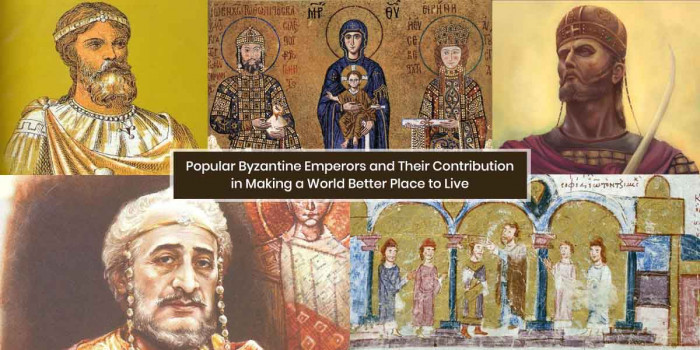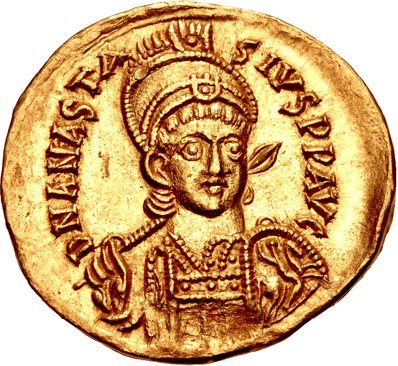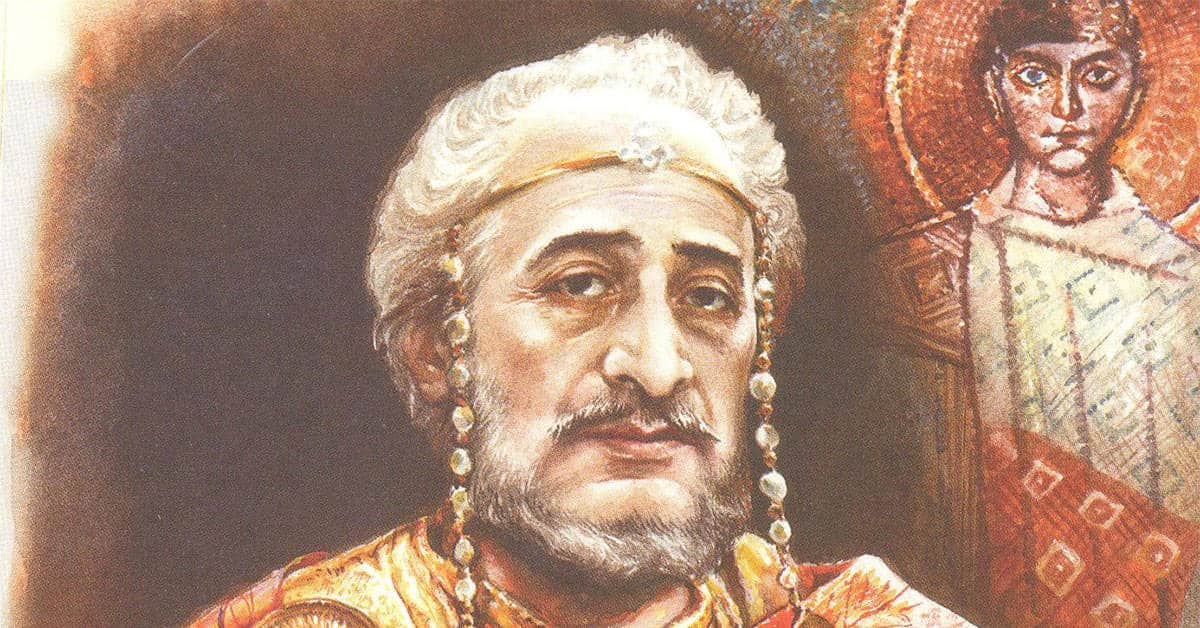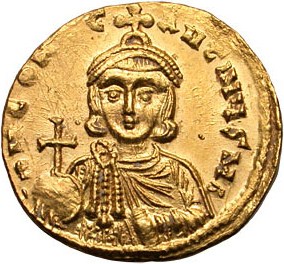10 Byzantine Emperors Who Fought Hard & Made Valuable Contribution to the Empire
The Byzantine empire was the legal continuation of the eastern half of the Roman Empire. Find out who were the most popular Byzantine emperors and their contribution to the empire.

Byzantine Empire, sometimes called the Eastern Roman Empire, was one of the greatest and long-lived empires in history. The Byzantine emperor existed for over a thousand years, and it spanned over different dynasties with hundreds of emperors.
Knowing that several Byzantine rulers ruled the empire, it is obvious that not all of them turned into prominent figures. Byzantine Empire was the continuation of the Roman empire, so its emperors are called Roman emperors.
Let us read about some notable Byzantine emperors who marked an important contribution to the empire.
1. Theodosius I

Theodosius I, also called Theodosius the Great, was Roman emperor from 379 to 395. He was the son of a top-ranking general, count Theodosius, who was a senior military officer serving Valentinian I and the western Roman during the late antiquity. Theodosius was said to be a diligent administrator and a devout Christian.
For centuries, he was considered a Champion of Christian orthodoxy who stamped out paganism. In 393, he banned the pagan rituals of the Olympics in Ancient Greece and was the last emperor to rule the eastern and western halves of the Roman Empire. In the later years, he suffered from severe diseases like edema in Milan. He died on 17th January 395.
2. Anastasius I

Anastasius I “Dicorus“ made his career as a government administrator and came to the throne at the age of 61 after being chosen by the wife of his predecessor. His reign was identified by improvements in the government and bureaucracy in the Eastern Roman Empire. He was born at Dyrrachium into a Greek or Illyrian family. He had one eye black and one blue and was the reason why his name was nicknamed Dicorus.
Furthermore, he is also famous for showing a unique interest in administrative efficiency. Anastasius continued the practice of selling official positions and has been known to allow the creation of a civilian aristocracy. Later, he gave official positions to his friend General Celer, his brother, his nephews, his brother-in-law, and his grand-nephews.
3. Maurice

Maurice was one of the Byzantine emperors who fought with success against the Sasanian empire. He campaigned extensively in the Balkans against the Avars and also conducted campaigns across the Danube. He was the first Roman emperor to do this in over two centuries. His reign was troubled by financial difficulties and constant warfare. He was born in 539 and had one brother and two sisters.
In 577, despite a lack of military experience, he was named magister militum per Orientem, effectively commander-in-chief of the Byzantine army in the east. In the west, Maurice organized the threatened Byzantine dominions in Italy into the Exarchate of Italy. In 59, he created the Exarchate along similar lines.
In religious matters, he was tolerant towards Monophysitism and clashed with Pope Gregory I over the latter’s defense of Rome against the Lombards. His efforts to consolidate the empire succeeded after the peace with Persia. His popularity declined during his reign because of his fiscal policies.
4. Constantine V

Constantine V was Byzantine emperor from 741 to 775. His reign saw a consolidation of Byzantine security from external threats. As a military leader, he took advantage of civil war in the Muslim world to make limited offensives on the Arab frontier.
His support of Iconoclasm and opposition to monasticism led to his vilification by later Byzantine historians and writers who criticized him as Kopronymos, which translates dung-named.
He was born in Constantinople to Emperor Leo II and his wife, Maria. Like his father, he supported iconoclasm, which was a movement that rejected the veneration of religious images and destroyed those in existence. He was responsible for the creation of a small central army of professional soldiers and the imperial tagmata. The organization was meant to reduce the threat of conspiracies to enhance the defensive capabilities of the Empire.
5. Basil I

Basil I, called the Macedonian, was a Byzantine emperor who reigned from 867 to 886. He entered into the service of Theophilitzes and was given a fortune by the wealthy Danielis. Despite his humble origins, Basil I showed his ability to run the affairs of the state. He was succeeded upon his death by his son Leo VI. This Byzantine emperor was born in late 811 at Chariopolis in the Byzantine theme of Macedonia.
During Basil’s reign, genealogy was produced that purported that his ancestors were not mere peasants but descendants of the Arsacid, kings of Armenia. Basil I became a respected monarch and ruled for 19 years.
He had been the companion of a monarch and achieved power through a series of murders. The Emperor's Basil reign was marked by the troublesome ongoing war with the Pauclians. He was considered the greatest emperor by the Byzantines during the Macedonian dynasty.
6. Theodora

Theodora was a beautiful Eastern Roman Empress by marriage to emperor Justinian. She is a saint in the Eastern Orthodox Church and the Oriental Orthodox church commemorated on 28th June and 14th November, respectively. Having no children, she was the last emperor of the Macedonian line. Before her death, she nominated Michael VI as her successor.
When Justinian succeeded to the throne, two years after the marriage, Theodora was crowned and became empress of the Eastern Roman empire. Theodora worked against her husband’s support of Chalcedonian Christianity in the struggle for the predominance of each faction. Later, she was accused of fostering Hersey and undermined the unity of Christendom.
7. John II Komnenos

Constantine XI Dragases Palaiologos was the last Byzantine emperor who reigned from 1449 until his death in battle at the Fall of Constantinople in 1453. He was the fourth son of Emperor Manuel II Palaiologos and Helena Dragas.
After his death, he turned into a legendary figure in Greek folklore as the Marble Emperor, who recovered the Empire and Constantinople from the Ottomans. He died without children, and as his favored successor, Constantine became proclaimed emperor in 1449.
He was the last Christian ruler of Constantinople, along with his bravery at the city’s fall cemented him as a legendary figure in later histories. He became known in Greek folklore as the Marble Emperor and reflected a popular legend that endured for centuries.
9. John I Tzimiskes

John I Tzimiskes was the senior Byzantine Emperor from 969 to 976. He was a successful general and strengthened the Empire and expanded its border during its short reign. He was born to a father belonging to the Kourkous family of the Armenian region and a mother belonging to the Phokas family. According to sources, he had reddish-blonde hair and blue eyes that attracted women.
His empire was at war with its neighbors emerging from the break-up of the Abbasid Caliphate. He died in 976, returning from his second campaign, the Abbasid, and was buried in the Church of Christ Chalkites. Several sources described that the Imperial chamberlain Basil Lekapenos subverted the Emperor to prevent him from taking away illegally obtained lands and riches from Lekapenos.
10. Leo III the Isaurian

Leo III the Isaurian was Byzantine emperor from 717 until death in 741 and was the founder of the Isaurian dynasty. He also defended the Empire against the invading Umayyads and forbade the veneration of icons. Leo was of Syrian origin and was born in Germanikeia in the Syrian province of Commagene. Leo entered Constantinople in 717 and forced the abdication of Theodosios III, becoming emperor as Leo III.
He was forced to attend the Second Arab Siege of Constantinople, which commenced in August of the same year. Unable to continue the siege in the face of the Bulgarian onslaught, Constantinople’s walls, and their exhausted provisions, the Arabs were forced to abandon the siege in August 718. Leo III died due to dropsy in 741 and was succeeded by his son, Constantine V.
Do you know more about Byzantine emperors and how they made an impact on history? Share your views below.
Popular Posts
Top 10 Sharpest & Deadliest Swords In History
In classic mythological movies, books and television, we’ve seen those audacious sword-wielding heroes smiting the enemi...
Augustus Perez
List of Water Deities from Different Mythologies
Water deities are the gods and goddesses who had the powers to control the elements of water and ruled over all the fresh and saltwater of the earth. Here’s a list of water deities from different mythologies.
Rishika Gupta
Winged Lion: The Terrifying Mythical Creature In Different Mythologies
A mythological creature, a winged lion dates back to ancient times. This flying lion-like creature has origins in Heraldry, Christianity, Mesopotamian, and Greek mythologies.
Ethan Stephans








